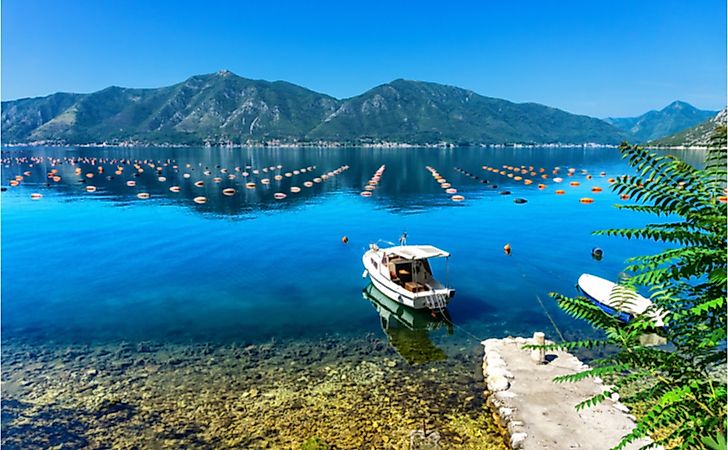What Are The Biggest Industries In Montenegro?

Montenegro is a Balkan nation whose capital city is known as Podgorica. The country experiences Adriatic climate along the south and sub-alpine climate around the mountainous regions. In 2016, Montenegro’s population was 678,000. Most of the country’s population speaks Serbian. Montenegro is currently undergoing a transitional economy that involves moving from a planned economy to a market economy. Some of the ongoing changes which are aimed at boosting economic growth include economic liberalization and privatization of state-owned enterprises. Besides boosting economic development in Montenegro, the transitions in the economy are also focusing on reducing government restrictions and regulations in the economy as well as allowing greater involvement of the private sector. As of 2017, the approximate number of persons in the labor force were 273,200. The unemployment rate at the time was 16.1%. In spite of the challenges that Montenegro has been facing such as the high unemployment rates, there has been a rise in economic growth due to increased foreign direct investment. The GDP of Montenegro, as of 2017, was US$ 4.774 billion.
The Biggest Industries In Montenegro
As of 2016, the % GDP contribution per sector in Montenegro was agriculture (7.5%), industry (15.9%), and services (76.6%). Subsequently, the service-based industry is the major economic driver of the country’s economy. Tourism is still in the process of development. The country’s major import partners include Bosnia and Herzegovina, Greece, and Serbia. Some of the common imports are oil, food, and electrical energy. On the other hand, Montenegro’s export partners include Bosnia and Herzegovina, Hungary, Italy, Switzerland, Germany, Croatia, and Serbia.
Services Industry
The services industry is the largest sector in Montenegro. It employs 75% of the labor force. Included in this industry are the tourism and banking sectors. The banking sector is mostly funded by foreign investors and the services that the banks offer include corporate and retail banking products. The banks that operate in Montenegro act as universal banks. The services sector also includes the tourism industry which is one of Montenegro’s highest income earners. In 2018, the country generated revenue of about US$ 1 billion from tourism. Due to the excellent performance of this industry, Montenegro has been able to attract hotels and wellness investments from foreign nations. The government is aiming at a GDP contribution by the tourism sector of 30% by 2027 through the heightened improvement of infrastructure. Some of the companies that have invested in the tourism sector in Montenegro include Russian-Montenegrin Company, Montenegro Stars Hotel Group, Maxim Chermesovi, and Aman Sveti Stefan.
Agriculture Industry
The agricultural industry in Montenegro employs 7.9% of the country’s labor force. Agricultural land covers 37% of the total land area. Even so, only 40% of that land area is used for crop cultivation. The rest of the land is for animal husbandry of sheep, poultry, pigs, hogs, cattle, goats, and horses. Some of the crops grown in Montenegro farms include vegetables (such as pepper, tomatoes, and cucumber), wheat, mushrooms, wild sage, oats, barley, maize, and fruits such as olives, plums, apples, blueberries, citruses, and wine grapes. Orchards and vineyards are mostly located in southern parts of the country which is from Podgorica to the sea. The agricultural land in Montenegro has been divided into five regions namely the coastal region, Zeta-Bjelopavlići region, Karst region, northern mountainous region, and Polimsko-Ibar region. Most of the crops grown in Montenegro are for local consumption.
A major challenge that the agriculture sector in Montenegro faces is climate change. According to FAO, the country’s areas of focus should be climate-smart agriculture technologies and improved competitiveness of agriculture among others.
Manufacturing Industry
The manufacturing industry in Montenegro employs 17.1% of the country’s labor force. This sector involves steel making, aluminum processing, mining, and consumer goods production. Steel and aluminum production is one of the main ventures within the manufacturing industry. 90% of the steel and aluminum produced is exported. The annual production capacities include 100,000 tons of aluminum, 1 million tons of bauxite, and 400,000 tons of crude steel. The main challenge faced by this industry is the high production costs.











